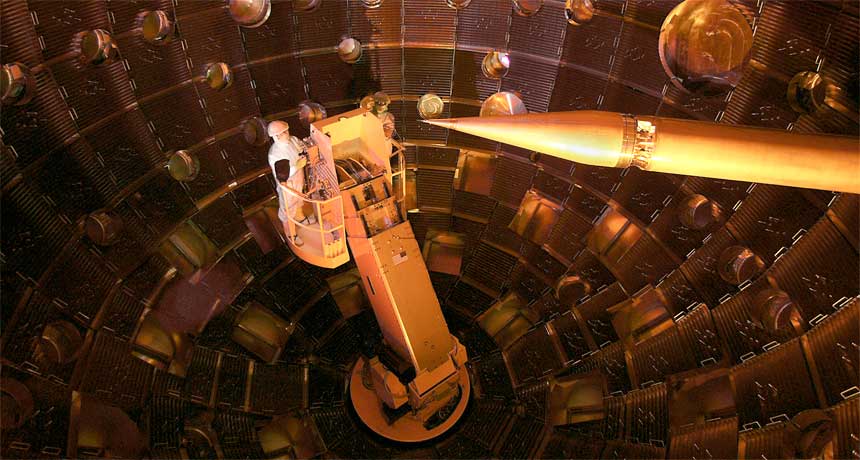
ALIGNING THE TARGET Workers perform maintenance on the National Ignition Facility’s target chamber. When devoid of people, this is where 192 laser beams fire simultaneously at a gold cylinder containing a capsule coated in hydrogen fuel. The positioner that holds the cylinder steady is at right.
Lawrence Livermore National Laboratory